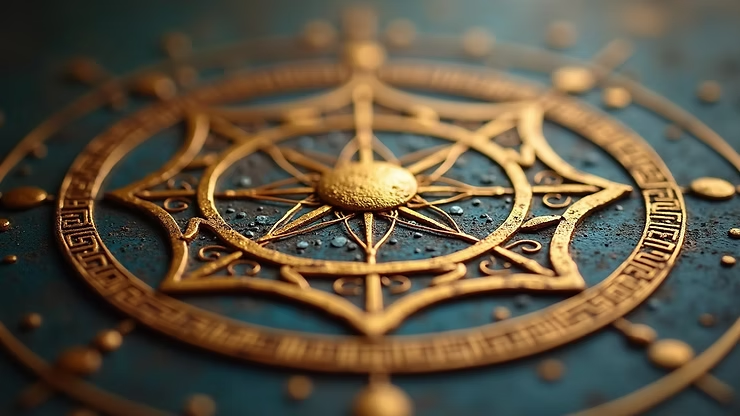The Four Main Types of Tantra

Tantra is a transformative spiritual tradition that has its roots in ancient India. It encompasses a variety of practices and philosophies aimed at enhancing our understanding of consciousness and existence.
- Tantra is a transformative spiritual tradition that has its roots in ancient India. It encompasses a variety of practices and philosophies aimed at enhancing our understanding of consciousness and existence.
- 1. Kriya Tantra
- 2. Mantra Tantra
- 3. Yantra Tantra
- 4. Alchemical Tantra
- Understanding the Essence of Tantra
The Four Main Types of Tantra : While western interpretations of tantra often focus on its sexual aspects, this view overlooks its rich diversity. In this post, we will explore the four main types of tantra, detailing their unique characteristics and significance within the broader spectrum of this age-old tradition.
1. Kriya Tantra
Kriya Tantra is often seen as a foundational practice that emphasizes action (kriya) as a pathway to enlightenment. It includes techniques such as meditative practices, breathing exercises (pranayama), and rituals, each aimed at purifying the body and mind.
The idea behind Kriya Tantra is that by actively participating in these practices, practitioners can awaken kundalini energy, which is believed to reside dormant at the spine’s base. Awakening this energy can lead to spiritual insights and a profound sense of consciousness.
For example, a typical Kriya session may last from 30 to 60 minutes and involves rhythmic breathing, visualization, and mantra repetition. A study showed that practitioners experienced a 40% increase in mental clarity and emotional stability after consistent practice over a few months. This makes Kriya Tantra a suitable option for anyone eager to embrace spiritual growth.
2. Mantra Tantra
Mantra Tantra focuses on using sacred sounds, phrases, and chants (mantras) to connect with the divine and facilitate spiritual development. These mantras create vibrations that can influence one’s consciousness and environment, thereby playing a crucial role in achieving peace and emotional balance.
Practitioners select specific mantras that resonate with their personal objectives. For instance, the mantra “Om Namah Shivaya” is used for healing and spiritual connection. Studies suggest that repeating mantras can reduce anxiety by up to 30%, enhancing overall well-being and focus.
In Mantra Tantra, the practice often involves sitting in a quiet space, closing the eyes, and repeating the chosen mantra for 15 to 20 minutes daily. This repetitive action can create a deeper sense of connection with oneself and a feeling of unity with the universe, fostering personal transformation.
3. Yantra Tantra
Yantra Tantra employs geometric symbols known as yantras to assist meditation and promote spiritual development. Each yantra represents deities, cosmic energies, or universal principles, acting as a bridge for practitioners to connect with the divine.
The Sri Yantra is perhaps the most renowned yantra, symbolizing the goddess Shakti and the cosmos. Meditating on this intricate design is believed to unlock spiritual wisdom and facilitate deeper insight. For example, practitioners who engage with the Sri Yantra often report experiencing a 50% increase in their ability to concentrate and stay present.
In Yantra Tantra, the exploration and contemplation of these visual symbols create a mindset conducive to spiritual awakening. This visualization process helps individuals transcend their physical limitations, resulting in a profound sense of unity with everything around them.
4. Alchemical Tantra
Alchemical Tantra takes a transformative approach, focusing on inner growth and integrating emotional and psychological factors. It emphasizes transforming lower energies into higher ones, akin to the alchemical quest for turning base metals into gold.
For instance, a practitioner might delve into past traumas or unresolved emotions during their meditative sessions. By embracing these aspects, they foster self-acceptance and harmony within themselves. Many individuals practicing Alchemical Tantra report significant breakthroughs in their emotional resilience and personal growth.
These practices can involve reflective journaling, meditation, and group discussions, helping participants gain deeper insights into their behaviors and motivations. Research indicates that individuals engaging in such therapeutic practices can see a 35% improvement in their emotional well-being.
Understanding the Essence of Tantra
Exploring the four primary types of tantra—Kriya, Mantra, Yantra, and Alchemical—reveals a broad array of deeply enriching practices focused on spiritual evolution and personal transformation. Each form approaches self-discovery and the divine in its own unique way, offering a versatile path for anyone interested in deepening their spiritual journey.
As tantra garners global attention, it becomes increasingly important to understand its multifaceted nature and the profound insights it provides into human experience. Engaging with these practices can lead to greater clarity and balance in our fast-paced lives. Ultimately, the journey through tantra invites each person to explore the complex layers of their own consciousness and nurture a deeper connection with themselves and the world around them.
A visual representation of a Sri Yantra, symbolizing spiritual dimensions and energies.
In summary, the teachings and practices of tantra offer essential tools for navigating life’s challenges while fostering a deeper understanding of oneself. The true essence of tantra lies in the exploration of our inner selves, encouraging each individual to embark on a profound journey within.
Four Styles Tantra: Kriya Tantra | Mantra Tantra| | Yantra Tantra | Alchemical Tantra



























